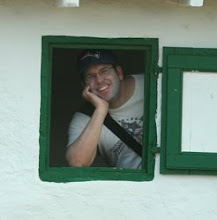
With the springlike weather, I took a trip to
Halibut Point State Park in Rockport. The birding was just fantastic. The final list included: Common Eider, King Eider, Mallard, Gadwall, American Black Duck, Red Breasted Merganzer, Razorbill, Bufflehead, Red Necked Grebe, Harlequin Duck, Common Goldeneye, Common Loon, Surf Scoter, White-winged Scoter, Black Scoter, Herring Gull, Greater Black-backed Gull, Mute Swan, Horned Grebe, Purple Sandpiper, Chickadee, Downy Woodpecker, Dark-eyed Junco, White-throated Sparrow, and Rock Pigeon.
With all of the snow gone, I was able to get down on the rocks and close to the birds. King Eider and Harlequin Duck were both "life-birds" for me so it was great to get down close to them. I was amazed that I was even able to get close enough to them to get a few nice pictures. I'll post them when I have a chance to edit them up. Until then, check these out (
King Eider,
Common Eider,
Harlequin Duck... mine are a bit less impressive than these but I don't have a 700 mm "canon").









